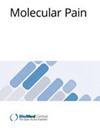The Regulation of the PD-1/PD-L1 Pathway in Imiquimod-Induced Chronic Psoriasis Itch and Itch Sensitization in Mouse
IF 2.8
3区 医学
Q2 NEUROSCIENCES
引用次数: 0
Abstract
PD-1/PD-L1 inhibitors have been demonstrated to induce itch in both humans and experimental animals. However, whether the PD-1/PD-L1 pathway is involved in the regulation of chronic psoriatic itch remains unclear. This study aimed to investigate the role of the PD-1/PD-L1 pathway in imiquimod-induced chronic psoriatic itch. The intradermal injection of PD-L1 in the nape of neck significantly alleviated chronic psoriatic itch in imiquimod-treated skin. Additionally, we observed that spontaneous scratching behavior induced by imiquimod disappeared on day 21. Still, intradermal injection of PD-1/PD-L1 inhibitors could induce more spontaneous scratching for over a month, indicating that imiquimod-treated skin remained in an itch sensitization state after the spontaneous scratching behavior disappeared. During this period, there was a significant increase in PD-1 receptor expression in both the imiquimod-treated skin and the spinal dorsal horn in mice, accompanied by significant activation of microglia in the spinal dorsal horn. These findings suggest the potential involvement of the peripheral and central PD-1/PD-L1 pathways in regulating chronic itch and itch sensitization induced by imiquimod.咪喹莫特诱导小鼠慢性银屑病瘙痒和瘙痒致敏过程中 PD-1/PD-L1 通路的调节作用
PD-1/PD-L1抑制剂已被证实可诱发人类和实验动物的瘙痒。然而,PD-1/PD-L1通路是否参与了慢性银屑病瘙痒的调控仍不清楚。本研究旨在探讨PD-1/PD-L1通路在咪喹莫特诱导的慢性银屑病瘙痒中的作用。在颈后部皮内注射 PD-L1 能明显缓解咪喹莫特治疗皮肤的慢性银屑病瘙痒。此外,我们还观察到咪喹莫特诱发的自发性搔抓行为在第 21 天消失。尽管如此,皮内注射 PD-1/PD-L1 抑制剂仍可诱发更多的自发搔痒行为,持续时间超过一个月,这表明咪喹莫特治疗的皮肤在自发搔痒行为消失后仍处于痒敏状态。在此期间,小鼠经咪咪莫德处理过的皮肤和脊髓背角的 PD-1 受体表达均显著增加,同时脊髓背角的小胶质细胞也显著活化。这些研究结果表明,外周和中枢 PD-1/PD-L1 通路可能参与了咪喹莫特诱导的慢性瘙痒和瘙痒敏感化的调节。
本文章由计算机程序翻译,如有差异,请以英文原文为准。
求助全文
约1分钟内获得全文
求助全文
来源期刊

Molecular Pain
医学-神经科学
CiteScore
5.60
自引率
3.00%
发文量
56
审稿时长
6-12 weeks
期刊介绍:
Molecular Pain is a peer-reviewed, open access journal that considers manuscripts in pain research at the cellular, subcellular and molecular levels. Molecular Pain provides a forum for molecular pain scientists to communicate their research findings in a targeted manner to others in this important and growing field.
 求助内容:
求助内容: 应助结果提醒方式:
应助结果提醒方式:


